new posts in all blogs
Viewing: Blog Posts Tagged with: ages 8-12, Most Recent at Top [Help]
Results 26 - 50 of 336
How to use this Page
You are viewing the most recent posts tagged with the words: ages 8-12 in the JacketFlap blog reader. What is a tag? Think of a tag as a keyword or category label. Tags can both help you find posts on JacketFlap.com as well as provide an easy way for you to "remember" and classify posts for later recall. Try adding a tag yourself by clicking "Add a tag" below a post's header. Scroll down through the list of Recent Posts in the left column and click on a post title that sounds interesting. You can view all posts from a specific blog by clicking the Blog name in the right column, or you can click a 'More Posts from this Blog' link in any individual post.
Explorers, inventors, researchers -- throughout history, scientists have pursued many different paths. But women have not always had an open invitation to take part. We need to pay particular attention to offering our students strong role models of all types of careers. Here are five of my favorite books about women who have pursued amazing careers in all sorts of scientific fields.
Girls Think of Everything: Stories of Ingenious Inventions by Women
by Catherine Thimmesh, illustrated by Melissa Sweet
Houghton Mifflin, 2000
Your local library
Amazon
Google Books preview
ages 7-12
With short entries, Thimmesh shares how women created ingenious inventions ranging from eminently helpful like Liquid Paper or the windshield wiper, to technically complex like the “space bumper” that protects NASA spacecraft and astronauts. The book ends with suggestions and resources to help young women start inventing on their own.
Life in the Ocean: The Story of Oceanographer Sylvia Earle
by Claire A. Nivola
Farrar, Straus & Giroux / Macmillan, 2012
Your local library
Amazon
Google Books preview
ages 5-9
This picture book biography captures Sylvia Earle’s life-long love of nature and the ocean. She helped design devices that allowed deep-water dives, lived for two weeks in a deep-sea station, and studied whales, swimming alongside them. Nivola’s rich illustrations help convey the awe-inspiring vastness of the undersea world and Earle’s passion for studying and protecting it.
Lives of the Scientists: Experiments, Explosions (and What the Neighbors Thought)
by Kathleen Krull, illustrated by Kathryn Hewitt
Harcourt / Houghton Mifflin Harcourt, 2013
Your local library
Amazon
ages 8-12
Krull tells young readers about the lives of 20 scientists, presenting quick biographical sketches told with verve and humor. She focuses on a diverse range of scientists, including six women, from around the world. An entertaining look at what these men and women were like as human beings, in the laboratory and out of it.
Who Says Women Can’t Be Doctors? The Story of Elizabeth Blackwell
by Tanya Lee Stone, illustrated by Marjorie Priceman
Henry Holt / Macmillan, 2013
Your local library
Amazon
Google Books preview
ages 5-9
Although Elizabeth Blackwell received 28 rejections from medical schools, she persevered until one accepted her. This lively picture book biography reminds readers that opportunities were different in the 1840s, and that Blackwell helped change this for girls today.
Who Was Sally Ride?
by Megan Stine, illustrated by Ted Hammond
Grosset & Dunlap / Penguin, 2013
Your local library
Amazon
ages 7-11
Sally Ride was an astrophysicist who became the first American woman to fly into space. This biography, part of the popular “Who Was…” series, clearly relates Ride’s life, from her childhood interests in sports and science to her work developing a robotic arm for space shuttles. Inspiring and informative, in an easy-to-read format. I especially like the parallel timelines at the end, which help young readers put Ride’s life in context of world events.
This article was originally published in
Parents Press, September 2015. Many thanks for all of their support. On Monday this week, I shared
five fiction stories that spark a love of science, especially for girls.
The review copies came from our school library, public library and home library. If you make a purchase using the Amazon links on this site, a small portion goes to Great Kid Books. Thank you for your support.
©2015 Mary Ann Scheuer, Great Kid Books
Only two generations ago, our grandmothers faced serious limitations on the careers they could pursue. Today, our girls can do anything they put their minds to, but far fewer women pursue scientific careers than men. Here are two picture books and three novels that share the exciting spark that fuels so much passion in young scientists.
The Most Magnificent Thing
by Ashley Spires
Kids Can, 2014
Your local library
Amazon
ages 4-7
This picture book celebrates the trials and tribulations that come with making things. As the young artist & engineer pulls a wagon full of odds and ends, she starts designing her magnificent creation. But science is hard work, filled with disappointments, before a triumphant ending.
Rosie Revere, Engineer
by Andrea Beaty, illustrated by David Roberts
Abrams, 2013
Your local library
Amazon
ages 5-8
This rhyming picture book tells the story of shy Rosie who likes to build things hidden away in her attic room. Her great-great-aunt Rose comes to visit, helping young Rosie see her way through her current contraption’s failure: for now she can try again. Rosie the Riveter would be proud, indeed.
Chasing Secrets
by Gennifer Choldenko
Wendy Lamb / Random House, 2015
Your local library
Amazon
ages 9-12
Turn-of-the-century San Francisco comes to life for young readers as 13-year-old Lizzie Kennedy accompanies her father on medical house calls, forms a friendship with the son of Jing, her family’s beloved cook, and grapples with the injustices that exist with gender, class and race. Local author Choldenko creates a tender and gripping story of friendship, mystery and persistence.
The Evolution of Calpurnia Tate
by Jacqueline Kelly
Henry Holt, 2009
Your local library
Amazon
ages 9-14
A natural-born scientist, 11-year-old Calpurnia would like spend time examining insects, getting to know her scientist grandfather or reading Darwin’s controversial The Origin of Species. But in 1899 Texas, all around her expect young girls to learn to sew, run a household and attract a future husband. Readers adore this witty heroine, and will be thrilled to read the sequel just published this year.
The Fourteenth Goldfish
by Jennifer L. Holm
Random House, 2014
Your local library
Amazon
ages 9-12
When a vaguely familiar teenage boy shows up at Ellie’s house, she is confused until she realizes that her grandfather has discovered a way to regenerate himself. But now he needs Ellie’s help regaining access to his laboratory. Young readers love the relationship between Ellie and her grandfather, but they also feel her growing excitement for scientific discoveries.
This article was originally published in
Parents Press, September 2015. Many thanks for all of their support. On Wednesday, I'll share 5 nonfiction books that highlight the accomplishments of women scientists.
The review copies came from our school library, public library and home library. If you make a purchase using the Amazon links on this site, a small portion goes to Great Kid Books. Thank you for your support.
©2015 Mary Ann Scheuer, Great Kid Books
"Either you see it or you don't."
As you open the heavy novel
The Marvels and read this epigraph, you wonder--just what am I supposed to see? What pieces fit of the story together? What details in his multilayered drawings does Brian Selznick intend as hints for plot twists to come? What imagery from his rich descriptions stand out?
Please join me as I ruminate over the wonder of Brian Selznick's masterful story
The Marvels. And definitely add your name below for a chance to win a giveaway of this beautiful novel.
The Marvels
by Brian Selznick
Scholastic, 2015
Your local library
Amazon
ages 10-14
As in Wonderstruck, Selznick tells two entirely different stories, one in pictures and the other in text. Instead of intertwining the two narratives,
The Marvels begins with nearly 400 pages of continuous pictures, telling the story of Billy Marvel and his family of actors, who flourish in London from the 17th to 19th centuries. The text then jumps nearly a century later, to Joseph Jervis, a boy who runs away from home, seeking refuge with his uncle in London. Joseph's eccentric uncle lives in the Marvel house, and young Joseph is intrigued by its portraits and ghostly presences.
The book trailer for
The Marvels is wonderful -- giving you a taste for the story, Billy's shipwreck and the sense of drama created by the theater setting.
I'm sure our Emerson book club will be talking about this as we go through our Mock Newbery discussions. Honestly, I haven't been able to fully digest this story. What parts of a story do we pay attention to? Can we see more when we look again? How does the text develop the characters and setting?
The Marvels, like Selznick's other masterpieces, is definitely a story that demands multiple readings.
Brian Selznick is setting out on a
multi-city tour to celebrate the release of The Marvels! Find out where to meet Brian Selznick on his tour for
#THEMARVELS here.
Please complete the rafflecopter below to enter for a chance at winning your own copy of
The Marvels plus a Marvels jigsaw puzzle.
a Rafflecopter giveawayGiveaway open to US addresses only. Prizing and samples provided by Scholastic.Here are some snippets from other reviews:
- "Art is seen to illuminate life and life to constantly spark art — a point further reinforced in the afterword when Selznick reveals his inspiration. Rich with “miracles and sadness,” a bookmaking tour de force, this novel is as full of marvels as its title suggests." -- The Washington Post review
- "Upon completing The Marvels, I sat still, feeling as I did after a remarkable theatrical experience, say a dramatic opera, a visually stunning film, or a striking play, in awe of what I’d just experienced. Hours later it lingers with me, a gorgeous work of art." -- Monica Edinger, Educating Alice
- "As a mentor text, this book is an excellent anchor piece for looking at character development and characterization. We see especially how Joseph develops as a character and how he changes throughout the book. It's simple and subtle but remarkable at the same time." -- Jen Vincent, Teach Mentor Texts
The review copy was kindly sent by the publisher, Scholastic. If you make a purchase using the Amazon links on this site, a small portion goes to Great Kid Books. Thank you for your support.
©2015 Mary Ann Scheuer, Great Kid Books
Tonight marks the beginning of the Jewish High Holidays with the start of Rosh Hashanah, the celebration of the New Year. A few books stand out as joyful ways to celebrate these holidays, both with Jewish families and in a multicultural school setting.
Apple Days:
A Rosh Hashanah Story
by Allison Sarnoff Soffer
illustrated by Bob McMahon
Kar-Ben, 2014
Your local library
Amazon
ages 4-8
Katy loves her family's tradition of picking apples and making applesauce in preparation for celebrating Rosh Hashanah. But this year, her mom can't go apple picking--she has to go help Aunt Leah with her new baby. What can Katy do?
 |
| "The next day, the crossing guard handed Katy a yellow apple, and the principal placed another in her backpack." |
Kids and families will smile at the way Katy's friends rally around her, knowing how important this holiday is for her family. Katy becomes the "expert", coaching her dad on just how she and her mom make applesauce. This simple story conveys the feeling of a community coming together, recognizing the importance of family traditions.
Celebrate Rosh Hashanah and Yom Kippur
with Honey, Prayers and the Shofar
by Deborah Heiligman
National Geographic, 2007
Your local library
Amazon
ages 6-9
With beautiful photographs and clear, engaging text, Deborah Heiligman helps young readers explore how Rosh Hashanah and Yom Kippur are celebrated by Jewish families around the world. Some examples will feel familiar to American families: a boy and his mother make a round challah in Israel and a little girl practices blowing a shofar in Los Angeles, but others emphasize how widespread the Jewish diaspora is. For example, a congregation in Zimbabwe sings and dances at a Rosh Hashanah service, and thousands of Jews attend a tashlikh service around a lake in the Ukraine to cast away their sins. A wonderful way to talk about celebrations that bring families together around the world.
For more books that portray the Jewish experience, I highly recommend looking at the
Sydney Taylor Book Award recipients from the past 40+ years.
New Year at the Pier: A Rosh Hashanah Story won this award in the young readers category in 2010. I remember very much enjoying it at the time, but haven't had a chance to reread it recently.
The review copies came from our school and public libraries. If you make a purchase using the Amazon links on this site, a small portion goes to Great Kid Books. Thank you for your support.
©2015 Mary Ann Scheuer, Great Kid Books
I want to take a moment on Labor Day to honor Cesar Chavez and share a new biography that conveys his life and work clearly for young readers. This is a must-have for school libraries, and also a good choice to have at home.
Cesar Chavez
True Books biographies series
by Josh Gregory
Children's Press / Scholastic, 2015
Your local library
Amazon
ages 8-11
Cesar Chavez changed conditions for farm laborers across the United States, especially in California. He helped farm workers come together to demand better working conditions and fair wages, and still inspires people today to stand up for their rights.
 |
| "Cesar Chavez changed farm labor in the United States." |
Bright photographs will draw students in to this biography, but it's the overall design that makes me recommend it so highly. This biography is written in clear, short sentences -- but more than that, it is organized clearly in a way that helps students form a clear picture of his life. As you can see from these examples, each chapter has a meaningful title, and sections headings help students create a focus for their reading. Captions provide focused information, and are set out in red.
 |
| "Chavez talks with striking workers in a worker's home." |
The timeline is one of my favorite features. It is often difficult for students to piece together the different parts of a person's life. Here, the timeline helps young readers see the key details progress in chronological order.
 |
| "1962: Chavez founds the National Farm Workers Association and begins gathering members." |
This biography is available in paperback for home or classroom use. Our schools subscribe to
TrueFlix, an online resource that lets students access full-text books as well as curated resources. I especially like the "read along" feature that provides full-text narration. Through this subscription, we have access to books on 18 different subject areas ranging from biographies to ancient civilizations to outer space.
You might also be interested in these picture books about the fight to improve the working conditions of farm workers in California:
The review copy was kindly sent by the publisher, Scholastic Library, as well as accessed through out TrueFlix subscription. If you make a purchase using the Amazon links on this site, a small portion goes to Great Kid Books. Thank you for your support.

What do other kids think of me?
Am I the only one going through this?
I'm sure that no one can understand how I'm feeling.
While any of us might have these thoughts once in a while, they are particularly intense for tweens -- kids ages 9 to 13 who are no longer little kids, but not quite teenagers. I've noticed that kids this age often turn to realistic fiction, perhaps reading to see how others cope with all the changing friendship dynamics that are happening around them.
Fans of
Wonder, by R.J. Palacio, are often touched precisely because they can see inside these social dynamics and get to know a kid who must struggle with these questions. I was eager to read Palacio's companion novel,
Auggie and Me, knowing how well she had helped us see inside different characters before. I'm definitely looking forward to sharing these stories with students--they will lead to some thoughtful conversations about empathy, kindness and understanding one another.
Auggie & Me: Three Wonder Stories
by R.J. Palacio
Knopf / Random House, 2015
audiobook by Brilliance Audio, 2015
Your local library
Amazon
ages 9-13
In
Auggie & Me, Palacio delves into three secondary characters from Wonder: Julian, Christopher and Charlotte. This is definitely NOT a sequel--the action takes place before and during the same time as Wonder. It does not tell the story of what happens to Auggie after
Wonder finishes. But it is a companion novel (or rather three short books) best read after
Wonder, "an expansion of Auggie's world," as Palacio writes in her introduction.
The three characters at the center of these short books were all impacted by Auggie, but these are their stories. We get to understand Julian, how his nightmares affected the way he reacted to Auggie, how his mother kept making excuses for him as opposed to helping him take responsibility for his actions. Palacio doesn't justify or defend Julian's actions, but she helps readers see inside him. And she lets Julian, who was so awful to Auggie in
Wonder, go through his own transformation.
Charlotte's story, in
Shingaling, shone the most brightly for me, perhaps because her insecurities resonated with me, or perhaps because her friendship struggles were separate from Auggie's and so more fully developed as a standalone story. But most likely, it's because of the way that Charlotte learns to overcome her worries, her social anxieties and her own inner-judgments to become friends with two girls she didn't know at all before 5th grade started.
Families and teachers will enjoy reading
Auggie and Me aloud precisely for the way it leads to conversations, just like
Wonder did. There are times that reading Julian's voice may be difficult, with his casual cruelty and naive declaration that he didn't mean to hurt anyone. And Charlotte sounds a lot like an insecure kid at times. But these voice rang true to me, and they let readers see inside other kids.
In the end,
Auggie and Me helps create empathy, leads to conversations about kindness and trust, makes way for small steps toward accepting others for who they are.
The review copy was kindly sent by the publisher, Alfred A. Knopf/Random House. If you make a purchase using the Amazon links on this site, a small portion goes to Great Kid Books. Thank you for your support.
©2015 Mary Ann Scheuer, Great Kid Books
As we start looking forward to the beginning of a new school year, I am craving routine in our lives. I love settling down with a read-aloud, either as a teacher or a family. It brings a sense of calm, but sharing a story together also creates a wonderful moment in itself. School Library Journal recently asked a group of librarians what they look for in choosing a read-aloud. I wanted to share my answer and some terrific ideas from friends:
"During this time, I pay special attention to stories that cultivate kindness and community, as well as courage and tenacity. These are qualities and topics that we’ll be talking about throughout the year.
This fall, I’m excited to recommend three new favorites: Katherine Applegate’s Crenshaw; Gennifer Choldenko’s Chasing Secrets; and Rita Williams-Garcia’s Gone Crazy in Alabama. Conversations about these novels will center on friendship, family, and community." -- Mary Ann Scheuer
 |
| Read-aloud favorites for Fall 2015 |
What do you look for in read-aloud favorites? Here are some recommendations from other friends:
"Mitali Perkins’s
Tiger Boy is an engrossing tale about a young Bengali boy who undertakes incredible risks to save a tiger cub... Vivid action and suspense, conveyed in simple, clear language, make this a captivating choice." I love this choice from
Lalitha Nataraj, at the Escondido Public Library, CA.
Tiger Boy makes a great read-aloud (see my
full review), and if you have the opportunity -- definitely invite Mitali Perkins to come speak with your students. She's wonderful!
"I look for stories with descriptive language, suspense, and a conflict that will make listeners think when selecting chapter book read alouds. Chris Grabenstein’s
Escape from Mr. Lemoncello’s Library makes an excellent choice, offering a perfect blend of mystery, adventure, puzzles, and literary references." My students have loved Grabenstein's mysteries, and I definitely agree with this recommendation from
Cathy Potter, the librarian at Falmouth Elementary School, ME.
Daryl Grabarek, editor of SLJ's Curriculum Connections newsletter, suggests one of my favorite chapter books,
Toys Go Out, by Emily Jenkins and Paul O. Zelinsky: "Jenkins imbues her characters (stuffed animals and a ball) with enormous personality, and their trials and triumphs ring true to this audience, who are thrilled to hear more of their adventures in
Toy Dance Party. And now there’s newly released picture book
Toys Meet Snow." Families at our school have loved reading this series aloud at home, and it works particularly well for a kids across a range of ages.
Finally, friend Allison Tran of the Mission Viejo Library, recommends
A Whole New Ballgame, by Phil Bildner, "a feel-good story about friendship, basketball, and the surprising things that happen when an inventive teacher shakes up the fifth-grade curriculum. Readers will instantly warm to the likable and refreshingly diverse cast of characters. The realistic dialog makes this a pleasure to read aloud." I haven't had a chance to read this yet, but I am definitely looking forward to trying it soon. I love how Allison described the book’s message of teamwork.
Definitely check out the whole article in
School Library Journal. Thanks again to Daryl Grabareck for a great column in SLJ. If you make a purchase using the Amazon links on this site, a small portion goes to Great Kid Books. Thank you for your support.
©2015 Mary Ann Scheuer, Great Kid Books
News broke last week that a California child was infected by the plague after visiting Yosemite National Park. Naturally, this caused alarms among families visiting the mountains--what causes this? how common is it? will my family be infected? Today we know that this serious illness is transmitted by rodents (see this info sheet)--but what about 100 years ago?
Gennifer Choldenko's newest historical fiction, an exciting story set in San Francisco during 1900, explores many important issues we are still debating today: the spread of infectious diseases, opportunities that women have to pursue careers in sciences, and discrimination against California's Asian American community. On one hand,
Chasing Secrets reads like exciting historical fiction, but on the other hand it provides an opportunity to talk about issues our society is still wrestling with today.
Chasing Secrets
by Gennifer Choldenko
Wendy Lamb / Random House, 2015
Your local library
Amazon
ages 9-12
*best new book*
Turn-of-the-century San Francisco comes to life for young readers as 13-year-old Lizzie Kennedy accompanies her father on medical house calls and wrestles with the realization that a strange new diseases is affecting many people, yet the authorities are reluctant to acknowledge its presence. Lizzie is a terrific character--thoughtful but headstrong, eager to explore but a bit naive, and determined to do the right thing.
Lizzie forms a friendship with Noah, the son of Jing, her family’s beloved cook, who is hiding in Jing's room in Lizzie's house. As she gets to know Noah, she grapples with the injustices that exist with gender, class and race. Young readers today will not only find Lizzie a compelling character, they too will reflect on these issues that affected San Francisco at the turn-of-the-century and impact us still today.
I particularly like the way my friend and excellent reviewer
Brenda Kahn sums up her thoughts on
Chasing Secrets:
"The San Francisco setting is particularly vivid, especially the juxtaposition of high society life and the poverty of Chinatown. Characters are well-drawn as well, with Lizzie being particularly appealing. There's humor, heightening suspense, and tragedy. While this is a work of historical fiction, thoughtful readers will make modern day connections to persistent problems of race, class, sexism and access to health care."
Bay Area author Gennifer Choldenko, who won the Newbery Honor for
Al Capone Does My Shirts, creates a tender and gripping story of friendship, mystery and persistence.
The review copy was kindly sent by the publisher, Wendy Lamb/Penguin Random House. If you make a purchase using the Amazon links on this site, a small portion goes to Great Kid Books. Thank you for your support.
©2015 Mary Ann Scheuer, Great Kid Books
How do you help children understand family stories in the context of history? Our lives are impacted by the social and political climates in which we live--and these impact the stories we tell our children about our own family's lives. Peter Sís wrestles with these questions in his memoir The Wall: Growing Up Behind the Iron Curtain, telling the story of growing up in Communist Czechoslovakia during the Cold War.
The Wall: Growing Up Behind the Iron Curtain
by Peter Sís
Frances Foster/Farrar, Straus & Giroux, 2007
Sibert Award for Nonfiction, 2008
Caldecott Honor, 2008
Your local library
Amazon
ages 9-16
Sís begins with a short introduction, giving context to the historical events. And then he starts his memoir by saying how he loved to draw for as long as he can remember. Throughout, he tells parallel stories of childhood and the political circumstances in Czechoslovakia. At home, he was able to draw whatever he wanted, but as soon as he started school, he was influenced by the state controlled propaganda.
"The Communists take control of the school. Russian-language classes--COMPULSORY.
Joining the Young Pioneers, the Communist youth movement--COMPULSORY."
 |
| "After drawing whatever he wanted to at home, he drew what he was told to at school." |
Sís conveys the historical context while giving his personal experience at the same time. The short chunks of text with small panel illustrations helps make the information more accessible and immediate. I find that kids like reading this more than one time, as they notice different details each time.
After the liberation of Prague Spring in 1968, the Soviets imposed strict controls once again. But Czechs found ways to push back and share ideas.
 |
| "Phones are bugged again, mail opened, people watched... Banned books are secretly translated, copied, and circulated as samizdat." |
Sís struggled to keep his artistic identity and independence. He describes both in his journal entries how he was pressured to join the party. And yet, as he wrote, "he had to draw. Sharing the dreams gave him hope." The journal entries (a sample is below) help give even more immediacy and details to how the political climate impacted his life.
 |
| "To get a permit to have a studio in my own house, I have to prove that I am an artist in good 'social standing,' that is, a member of the Community Party." |
My family and I recently visited the Czech Republic, meeting with several members of the university who have developed a program to honor my great-uncle,
George Placzek (a long article about his scientific legacy is in the
Cern Courier, the International Journal of High Energy Physics). I was fascinated to hear about how the Communist era impacted their lives, much as it had for Peter Sís. They faced limitations on their professional careers, and even brought a
samizdat to show me.
The Wall: Growing Up Behind the Iron Curtain provides a fascinating way to combine visual storytelling, memoir and political history. I am grateful to Peter Sís, not only for persevering to follow his art, but also for telling this story. I know, from my own family history, the pressure to move forward and put difficult times behind you--and the Czech Republic is blossoming once again. But this history, both personal and political, is important to share with our children.
Kirkus Review sums it up:
"A masterpiece for readers young and old."
Illustrations ©2007 Peter Sís; used with permission from the publisher, Farrar, Straus & Giroux / Macmillan. The review copy comes from our personal library. If you make a purchase using the Amazon links on this site, a small portion goes to Great Kid Books. Thank you for your support.
©2015 Mary Ann Scheuer, Great Kid Books
I have often wondered how to share the enormity of World War II with my children and students -- how to help them start to understand the enormity of the war, its complexities, and also its impact on individual people. My own family fled from German occupation of Czechoslovakia and Austria, and many who didn't leave were caught and killed.
 I feel strongly that children should learn about the upheaval that World War II caused, but how do we do this in a way that they can absorb? As parents and teachers we need to consider children's developmental stages as we introduce the terrifying and tragic aspects of war.
I feel strongly that children should learn about the upheaval that World War II caused, but how do we do this in a way that they can absorb? As parents and teachers we need to consider children's developmental stages as we introduce the terrifying and tragic aspects of war.
In The Journey that Saved Curious George, Louise Borden shares the true story of how Margret and H.A. Rey escaped Paris two days before the Nazis invaded. It is one of the best introductions I have ever read with children to this tumultuous time period in European history.
The Journey that Saved Curious George
The True Wartime Escape of Margret and H.A. Rey
by Louise Borden
illustrated by Allan Drummond
Houghton Mifflin Harcourt, 2005
Google Books preview
Your local library
Amazon
ages 9-14
Borden writes in her introduction that she had heard for many years about Margret and H.A. Rey's escape from Paris on bicycles in June 1940, just as the Germans were occupying France, but that no one could share many details.
"The story felt incomplete. I wanted to know more. I wanted real images. I was curious, just like the Reys' famous little monkey, George."
And so Borden embarked on her own journey, a journey of research reading the Reys' papers, notebooks and diaries, speaking to the Reys' friends and colleagues, and traveling to many of the places where the Reys lived between 1936 and 1940.
 |
| map showing the Reys' journey in 1940, escaping Paris by bicycle and train |
Margret and H.A. Rey were both born in Hamburg, Germany in 1906 and 1898, respectively, to middle class Jewish families. Borden helps young readers understand the context of their lives, by combining clear text, photographs and illustrations. Readers immediately get a sense of Margret and Hans as young people, but also the times and places they lived.
The Reys returned to Europe for their honeymoon in 1936 and ended up living in Paris for four years. During this time, they began writing and publishing children's picture books. As the Nazis began invading European countries, the Reys became concerned. When the Germans invaded Holland, Belgium and then northern France, it became clear that the Reys needed to make plans to flee--and quickly.
I especially love how Borden shows actual visas, passports and pages from Hans' diary to help readers see how she found the information to piece together for their story. This helps create a palpable sense of being there alongside the Reys, especially as they frantically tried to prepare for their departure.
Alan Drummond's illustrations also convey the chaos, but the line drawings give more life and energy and the soft colors keep the mood from becoming too somber. The illustration below show how Margret and Hans eventually were able to flee Paris on bicycles--two days before Paris fell to the German invasion.
Through this story, children are able to get an appreciation for both the chaos that war brought to ordinary people throughout Europe, as well as the frightening experience of one couple. As Louise Borden writes,
"Everywhere there was confusion and noise: grinding gears of overheated cars and the frightening drone of German scout planes. Constant and relentless were the honking to speed up the crawling procession of the largest motorized evacuation in history.
More than five million people were on the roads of France that day. Among this sea of humanity were two small figures: Margret and H.A. Rey."
This is an excellent nonfiction for elementary students--especially those who profess disdain for nonfiction. The text is broken up into short lines, creating plenty of white space for the illustrations to tell their part of the story. The descriptions bring you right into the action, and the pacing keeps readers moving until the dramatic climax of the Reys' escape.
For more interesting information, definitely check out this
Q&A with Louise Borden, from the publishers Houghton Mifflin Harcourt.
I purchased these review copies for my personal library. If you make a purchase using the Amazon links on this site, a small portion goes to Great Kid Books. Thank you for your support.
©2015 Mary Ann Scheuer, Great Kid Books

Parents and children know that it’s important for children to develop strong reading skills--the question I hear so many parents asking is, “How can I get my child to enjoy reading more?” They’re absolutely right. Enjoying reading is key.
We do what we enjoy doing--that’s basic human nature, isn’t it? Reading develops only with practice -- the more you read, the better you get; the better you get, the more you read. So how do we help children enjoy reading and choose to read more often? I love the National PTA's Family Reading Challenge -- check out the resources & ideas at ptareadingchallenge.org.
I love this video with Kwame Alexander and his family talking about about what they love about reading together as a family. Fills me with smiles hearing how much love and happiness reading together brings.
Across all age groups, children agree that their favorite books are the ones they pick for themselves. Not only that, they are also much more likely to finish books that they choose themselves.
Encourage a love of reading by taking your kids to the library or bookstore and telling them: “Read whatever you want to! As long as you choose it, that’s what is important to me.” Kids love being in control.
Kids want books that make them laugh when they’re choosing books--and this is the dominant factor for kids in elementary and middle school. Kids also report that they look for books that let them use their imagination, inspire them or teach them something new.
Parents sometimes wonder: should I encourage my child to read on his or her own, instead of reading aloud? Shouldn’t they practice themselves? Reading practice matters, but kids have to practice all day long in school.
Reading together builds bonds and helps children remember the pleasure that books can bring.Children enjoy listening to more complex, interesting stories than they can read independently. Typically, it isn’t until eighth grade that reading comprehension catches up to listening comprehension. Nearly half of kids said they liked listening to their parents read aloud because they could listen to books that might have been too hard to read on their own.
Reading aloud at home is like an advertisement for the pleasures of reading. Why take away these advertisements just because kids can read on their own? Shared reading time provides special time for families, especially as the chaos of life multiplies as kids juggle activities and homework. It can lead to fun family jokes that stem from funny moments in a story, and it can provide safe opportunities kids bring up difficult, confusing big issues they’re thinking about.
I hope you can carve out time to read together this summer. It will make a difference in your children's lives.
©2015 Mary Ann Scheuer, Great Kid Books
Summer is definitely in full swing for us, with plenty of time to play with friends, hang out with siblings and explore new places. I keep encouraging my kids to find a little quiet time to get lost in a book. Whether it's escaping into your imagination or just having time away from the frenzy, it's important to keep reading in the summer.
Here are some of my favorite books to recommend for kids who have just finished 4th and 5th grade. Please note: Our schools use the Fountas & Pinnell reading levels to help indicate "just right books" for students. I like to band these levels together, to look at a group of similar books.
Having Fun with Chapter Books (level O-P-Q)
Adventure & Historical Fiction (level Q-R-S-T)
- Al Capone Does My Shirts, by Gennifer Choldenko (library - Amazon)
- The Shark Attacks of 1916 (I Survived series), by Lauren Tarshis (library - Amazon)
Exciting Fantasy (level Q-R-S)
Funny Stories (level R-S-T)
Stories that Touch Your Heart (level R-S-T-U)
Exciting Adventure and Fantasy (level T-U-V)
Do you like these? Print out the whole list to take to the library or bookstore! Share it with friends!
PDFs for easy printing: 4th & 5th gradeView full lists here via SlideShare:
Check out all of the 2015 summer reading lists I developed for grades K through 5 on this page.
If you make a purchase using the Amazon links on this site, a small portion goes to Great Kid Books. Thank you for your support.
Check out all of the 2015 summer reading lists I developed for grades K through 5 on this page.If you make a purchase using the Amazon links on this site, a small portion goes to Great Kid Books. Thank you for your support.©2015 Mary Ann Scheuer, Great Kid Books
School is out and kids love the vacation time. But it's more important than ever for families to encourage kids to read. They need to keep reading in order to maintain all the skills they developed during the year. It's the perfect opportunity to talk with your kids about what types of books they like to read when they can choose their books.
Here are some of my favorite books to recommend for kids who have just finished 2nd and 3rd grade. Please note: Our schools use the Fountas & Pinnell reading levels to help indicate "just right books" for students. I like to band these levels together, to look at a group of similar books.
Beginning with Chapter Books (level K-L-M)
Graphic Novels We LoveHaving Fun with Chapter Books (level N-O-P)
Funny Stories (level Q-R-S)
Stories that Touch Your Heart (level Q-R-S)
Exciting Adventure and Fantasy (level Q-R-S)
Fascinating Nonfiction
- Baby Elephant in the Wild, by Caitlin O'Connell (library--Amazon)
- Little Melba and Her Big Trombone, by Katheryn Russell-Brown (library--Amazon)
Do you like these? Print out the whole list to take to the library or bookstore! Share it with friends!
PDF for easy printing: 2nd & 3rd gradeView full lists here via SlideShare:
Check out all of the
2015 summer reading lists I developed for grades K through 5
on this page.
If you make a purchase using the Amazon links on this site, a small portion goes to Great Kid Books. Thank you for your support.
©2015 Mary Ann Scheuer, Great Kid Books
I want to model all sorts of options for girls in my classes--showing them women who have excelled as athletes, scientists, politicians and activists. Kids love playing soccer and many recognize pro players. It's important to share biographies of women soccer players, along with men. Unfortunately, few are published, especially for readers in 3rd through 5th grade. Here are my thoughts on two biographies and one website.
Abby Wambach
by Jon M. Fishman
Amazing Athletes series
Lerner, 2014
preview in Google Books
Your local library
Amazon
ages 8-10
Abby Wambach is one of the current stars of the US women's national team. She
scored the winning goal in this week's game against Nigeria, helping her team win their group and advance into the elimination rounds of the World Cup. This biography is clear and straightforward. It starts with an exciting scene from 2012 Olympics to help readers understand Abby's strengths and key role as a player.
Chapters then follow Abby's life in chronological order, looking at the way she played sports as a child, in high school and college, and then finally joining a pro soccer team. Students in 3rd and 4th grade will like the combination of high interest photos, all marked with captions, and widely spaced texts. Take a look at the sample in
Google Books to see the print inside the book. We have many books from Lerner's terrific
Amazing Athletes series, and many feature women athletes. Unfortunately, this is the only one about a soccer player.
Alex Morgan
by Illugi Jökulsson
Abbeville Kids, 2015
Your local library
Amazonages 9-12
Alex Morgan is very well known, and I was excited to order this biography. Unfortunately, it exhibits the worst types of sports writing about women. While the first chapter starts with her role in the US women's national team, the next chapter focuses on her astrological birth sign. Really?!! The chapter on her childhood talks about other famous celebrities who came from the same town.
Not only does this book send harmful messages, its structure is confusing. Readers expect biographies to proceed in sequential order, starting with a figure's childhood. But this biography jumps from Alex's childhood to the early beginnings of soccer in the 1800s to the first Women's World Cup. This book will draw students in with high quality photographs and bold chapter headings, but it is poorly organized.
US Women's National Team
One Nation. One Team. 23 Storiesussoccer.com/womens-national-team
Kids will love exploring the US women's national team website. Each player has recorded short heartfelt videos that connect their childhood experiences to their current role as a player on the national team. Short paragraphs model excellent sports writing. But it's the videos that will stick with kids because they'll hear these inspiring stories in the players own voices.
I purchased these review copies came for my personal library. If you make a purchase using the Amazon links on this site, a small portion goes to Great Kid Books. Thank you for your support.
©2015 Mary Ann Scheuer, Great Kid Books
As the Women's World Cup gets underway in Canada, I want to share three soccer books that can hook young readers. Soccer continues to be a hugely popular sport among kids around the world. These three books can capitalize on young reader's interest, and provide them with a chance to read nonfiction about the sport they love. I'll share them in order of complexity, starting with the easiest reading level.
Play Soccer Like a Pro
by Christopher Forest
Sports Illustrated for Kids / Capstone, 2010
preview through Google Books
Your local library
Amazon
ages 7-10
With chapters such as "How to Dribble" and "How to Beat a Defender", this book will appeal to kids with a keen interest in playing the game. Clear headings and subheadings make it easy to read, with vibrant photographs illustrating the point.
"Stay in contact with the ball. As long as you have the ball, make sure you control it between your feet at all times. Defenders will have a hard time stealing the ball if you keep it under control."
While this may not be new advice for young players, this book can be an excellent model for students in their own writing. Unfortunately, all of the photographs just feature professional male players. It is disappointing that professional women were not included as well.
Everything Soccer
by Blake Hoena with Omar Gonzalez
National Geographic Kids, 2014
Your local library
Amazon
ages 9-12
High-impact photos will draw kids immediately to this book, and they will like reading the plentiful short facts on topics ranging from stats and championships, to diagrams of a soccer pitch and basic formations. The writing is clear and the use of headings and subheadings is excellent. However, the text is better for older readers, with more complex vocabulary and smaller font size. This text is an excellent example of elaborating to fully describe the role of a defender.
"Defenders (also called fullbacks) are the basis for any winning team. They are the muscle that helps protect the goalie... Defenders also need to excel at tackling, or intercepting the ball. Sometimes, a defender called a sweeper stays by the goal to provide an extra line of defense."
Best of all, Everything Soccer uses examples from women's and men's professional teams from around the world -- as well as kids in action. In the spread below, the referee is a woman holding up a red card, the professionals are from Brazil and North Korea. My only complaint is that there are no captions identifying players or teams.
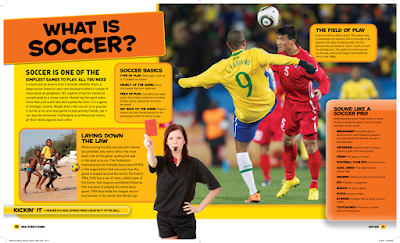 |
| (click to enlarge) |
This will be a book that kids will enjoy reading, returning to it again and again. The short chunks makes it easy to dip into. My only concern is that kids will spend more time looking at the pictures than reading the paragraphs.
U.S. Women's Team: Soccer Champions!
by Illugi Jökulsson
Abbeville Kids, 2015
Your local library
Amazon
ages 9-12
I am stunned how few books there are about women's soccer, especially considering how well the United States national team has played in the Olympics. The US women's national soccer team has won the Olympics in 2004, 2008 and 2012--garnering lots of press in the process. This book, originally published in Iceland, is a good choice for kids interested in reading more in-depth about the American team.
Written with a classic sports journalism style, this follows the ups and downs of the US women's national team from 1991 to the present. It follows a clear sequence, noting the difference between World Cup games and the Olympics. The writing is more complex, but clear structure and text features help readers.
"Vast tensions surrounded the 1999 World Cup final between the United States and China. Both teams played cautiously and failed to create proper opportunities for scoring. After 90 minutes, the game went into extra time, and fans of the U.S. team were justifiably anxious."
The games' final scores and opponents are clearly shown on each page, and captions identify each player and their stats. I love how this takes in-depth sports writing and focuses on women who excel in the world arena. This would be a great read-aloud for kids in 3rd and 4th grade, or perfect for 5th and 6th graders.
The review copy of Everything Soccer was kindly sent by the publisher, National Geographic Kids. The other books came from our school library. If you make a purchase using the Amazon links on this site, a small portion goes to Great Kid Books. Thank you for your support.
©2015 Mary Ann Scheuer, Great Kid Books
Right away, I can sense a book is special by noticing my students' reactions. Whenever I've asked my 5th graders who've read
Circus Mirandus how they like it, they start smiling and there's a twinkle in their eyes. OK, it sounds corny when I write it down, but you can feel the magic, the friendship, the hope they find in this book.
Circus Mirandus
by Cassie Beasley
Dial / Penguin Random House, 2015
Preview at Google Books
Your local library
Amazon
ages 9-12
Ever since he was a little boy, Micah has heard stories from his grandfather about the magical Circus Mirandus and the Lightbender who promised him a miracle. Now that Grandfather Ephraim is ill, Micah knows that he must do everything he can to find the Lightbender. But how can he find the circus, especially with his strict aunt keeping her eye on him?
"
Circus Mirandus is not a story just about adventure," Corina wanted me to know, "it's about a friendship. You see, they're very unlikely friends at first but they become so loyal to each other." When Jenny Mendoza first hears about this quest, she is skeptical -- after all, Jenny is a logical, careful thinker. But Micah and Jenny do find the circus, the Lightbender and all the magic they were looking for.
"Reading this book inspired me because the ultimate goal is not what you think it is -- it isn't just to keep his grandfather alive. There are layers, ways that Micah learns he can make a difference, how magic makes a difference." -- Corina, 5th grade

Corina sparkled as she talked about how much she enjoyed
Circus Mirandus. I can imagine her being transported to the circus in her imagination, soaring with Micah over the fence, holding onto the giant gorilla balloon (yes, you'll really have to read it to understand that).
I also like how Tasha Sackler, at
Waking Brain Cells, describes the friendship at the heart of this story:
"It feels very organic and the two of them are not natural friends who see the world the same way. Instead it is much more like making a real friend where it is the willingness to be friends that makes a huge difference and a decision to stop arguing when you don’t agree. It is these parts of the book that are so realistic, where the relationships shine, that make the book as strong as it is."
Get a feel for the magic in
Circus Mirandus by reading chapter four in the preview below:
For more, check out these very interesting interviews with
Cassie Beasley:
The review copy was kindly sent by the publisher, Dial / Penguin. If you make a purchase using the Amazon links on this site, a small portion goes to Great Kid Books. Thank you for your support.
©2015 Mary Ann Scheuer, Great Kid Books
Pen-pals River and Meena reveal their "own true selves" to each other through the letters they write, and in the process they share their distinct voices and feelings with us. This is a truly wonderful story to listen to, either as an audiobook or read-aloud.
Same Sun Here
by Silas House and Neela Vaswani
narrated by Silas House and Neela Vaswani
Candlewick, 2012 and Brilliance Audio, 2013
*winner of 2013 Audie Awards*
Your local library
Amazon
ages 9-13
At the outset, Meena and River seem as different as can be. Meena has just moved to New York City from India, while River has lived all his life in a small coal-mining town in Kentucky. Meena begins writing River as part of a summer school pen-pal project, but their friendship slowly develops as they share their hopes and frustrations, discovering how much they are alike despite their differences. They both have been raised by their grandmothers for much of their lives, and they both love the mountains-- River loves the Appalachian Mountains, and Meena misses the mountains in Mussoorie, India.
Their honesty and sincerity especially comes through in the audiobook, as you can hear River and Meena's emotions and accents. Silas House and Neela Vaswani
actually became pen-pals as they wrote this book, writing letters and mailing them back and forth to each other. Although River and Meena are fictional characters, they are closely tied to the authors. The fact that the authors narrate the audiobook makes it even more powerful.
I know that my students will be able to connect with Meena and River as well. Whether they know first-hand how hard it is to have your father gone for much of the time because of work, or whether they can understand how River and Meena feel because of they way they describe themselves, this is a story that will help kids feel more at home with themselves and understand the world around them. I especially want to share a story with a character who's recently moved from India, since there are not many books in my library with East Asian characters.
Same Sun Here has been recognized especially as an audiobook (winning the
2013 Audie Award and read aloud (a finalist for the
E.B. White Read-Aloud Award). If you want to see how to extend this in the classroom, head over to
The Classroom Bookshelf to see a terrific collection of ideas.
The review copy was kindly sent by the publisher, Candlewick. If you make a purchase using the Amazon links on this site, a small portion goes to Great Kid Books. Thank you for your support.
©2015 Mary Ann Scheuer, Great Kid Books
Many of my students turn to books to sink into someone's world, to understand someone else's struggles and gain perspectives on their own lives.
Fish in a Tree has been a favorite at Emerson all spring precisely because of this.
Lynda Mullaly Hunt draws readers into Ally's world and helps them understand how hard school is for her. My students keep recommending this to one another, especially to friends who like stories that really reach your heart.
Fish in a Tree
by Lynda Mullaly Hunt
Nancy Paulsen / Penguin, 2015
Your local library
Amazon
ages 9-12
*best new book*
Ally Nickerson knows how to survive a day at school, but each day is an ordeal. In 6th grade and at her seventh school, Ally does everything she can to cover up the fact that reading and writing are nearly impossible for her. "I wonder what it would be like to be able to relax at school and not have to worry every second of every minute." Her teachers and her principal say that it's up to her, but Ally knows that it isn't. She just feels broken -- except when she's drawing in her Sketchbook of Impossible Things.
When Ally's teacher goes out on maternity leave, a new young teacher takes her place. For the first time, a teacher really sees Ally for who she is, for what her real strengths are as well as her profound struggles. He helps diagnose her dyslexia and starts giving her extra reading support after school. At the same time, Ally starts developing friendships with two other kids who also don't fit the typical mold. These friendships and her new reading skills help Ally believe in herself and her own gifts.
My students would absolutely agree with this starred review from
Booklist:
"Filled with a delightful range of quirky characters and told with tons of heart, the story also explores themes of family, friendship, and courage in its many forms. And while a girl with dyslexia may be the center of the book, it has something to offer for a wide-ranging audience, making this an excellent class read-aloud. A hopeful and meaningful choice for those who struggle academically, this is as unique as its heroine."
Share this book trailer with kids to give them a feel for the story, and then head over to the Mr. Schu's blog
Watch.Connect.Read for Lynda's wonderful essay about how she approaches her writing, starting with character and what she sees in her head.
When the literacy coaches at Berkeley Unified School District asked me to recommend a book that lends itself to talking about multiple perspectives, I recommended Fish in a Tree. They loved how you could pause to think about the story from the principal's point of view, Ally's mother's, or her brother Travis's perspective. Teachers will want to check out this
educator's guide for more ideas.
The review copy was kindly sent by the publisher, Nancy Paulsen/Penguin Random House. If you make a purchase using the Amazon links on this site, a small portion goes to Great Kid Books. Thank you for your support.
©2015 Mary Ann Scheuer, Great Kid Books
Emerson's fantastic book club met today for our Summer Reading Celebration and 45 kids came to the library to have lunch together, swap book recommendations and share their love for reading. We had such a fun time!
Our book club welcomes all 4th and 5th graders. All spring, we've been talking about books we've been reading and encouraging friends to read the books we've liked. We will hold our Mock Newbery Club again next fall, so we've been paying special attention to the books published in 2015. Here are the titles our students have recommended so far for consideration:
All the Answers, by Kate Messner
Blackbird Fly, by Erin Entrada Kelly
Blue Birds, by Caroline Starr Rose
The Detective's Assistant, by Katherine Hannigan
Echo, by Pam Muñoz Ryan
Fish in a Tree, by Lynda Mullaly Hunt
Gone Crazy in Alabama, by Rita Williams-Garcia
Honey, by Sarah Weeks
Listen, Slowly, by Thanhha Lai
My Secret Guide to Paris, by Lisa Schroeder
Neon Aliens Ate My Homework, by Nick Cannon
Nightbird, by Alice Hoffman
The Penderwicks in Spring, by Jeanne Birdsall
Pip Bartlett's Guide to Magical Animals, by Maggie Stiefvater and Jackson Pearce
Tiger Boy, by Mitali Perkins
The War that Saved My Life, by Kimberly Brubaker Bradley
Wish Girl, by Nikki Loftin
It was so much fun hearing kids share about why they'd recommend a book to friends. The books that are getting the most love right now are definitely
The Detective's Assistant,
Echo,
Fish in a Tree, and
Gone Crazy in Alabama.
After sharing book recommendations, we took some time to write our own "to be read" lists. These lists help us look forward to the next book we want to read. It's a habit I want to instill in all my students. And so it was great to take a minute to write down our ideas and ask friends for recommendations.
We finished our celebration by taking "shelfies" -- pictures with our favorite books and with the books we want to read. It was a terrific celebration of our love of reading. Many thanks to Melissa Guerrette for her inspiring article on the
Nerdy Book Club blog all about shelfies. I'm sure our sheflie celebration with get many many of our students talking about books they want to read.
Many thanks to all of the publishers who support our book club by sending us advanced copies. If you make a purchase using the Amazon links on this site, a small portion goes to Great Kid Books. Thank you for your support.
©2015 Mary Ann Scheuer, Great Kid Books
As parents, we want our children to enjoy reading, so that they want to read more. The single most important thing you can do to help ensure this? Read aloud. Find stories that you can share together. Find books that linger with you, that make you both wonder about the world.
Tiger Boy, by
Mitali Perkins, is perfect for a family read-aloud--the 4th graders at Malcolm X School in Berkeley are giving it huge thumbs up and I heartily agree. If you have an animal-lover, or you're looking for a book set in India or Bangladesh, or you're looking for a book with a courageous kid who stands up for what's right -- definitely seek out
Tiger Boy.
Tiger Boy
by Mitali Perkins
Charlesbridge, 2015
Your local library
Amazon
ages 8-11
When a tiger cub escapes from a reserve in the Sundarbans, a delta region straddling the India-Bengladesh border, many of the residents on a nearby island try to find it. Some are worried that its mother will set out looking for it, possibly hurting or killing people in the process. Others have been hired by a wealthy man to capture it for trade on the black market.
Neel is determined to help with the search--protecting the tiger cub is as important to him and he isn't afraid to stand up to greedy Gupta or his hired men. Neel's parents want him to focus on his studies and prepare for his exams. While Neel loves learning and languages, he finds math frustrating and confusing. And how can he concentrate knowing that the tiger cub needs his help?
Mitali Perkins draws in readers, as they feel how much Neel wants to use his special knowledge of his island to help find the tiger. As the
CCBC review so clearly puts it,
"The sense of urgency that propels Neel and Rupa’s hunt for the cub creates the perfect amount of tension in an engaging story wonderfully grounded in Neel’s point of view and his experiences in his family and community. Their effort to save the cub helps Neel understand how furthering his education is one means of helping protect the place he lives."
I especially love how Perkins balances the relationship between Neel and his sister Rupta. Perkins both respects the traditional role that women have in this Bengali village, but she also shows Rupta playing an active role.
I have found that my students are not picking this up on their own, even when I recommend it. That's why I think it would make a terrific read-aloud. Parents (or teachers) can encourage kids to give something a try that might be different from the usual books they read. It would make a great book to read this summer or in the fall--see if it leads kids to wanting to learn more about protecting the tigers in the Sunderbans.
Illustrations ©2015 by Jamie Hogan; used with permission from the publisher. The review copy was kindly sent by the publisher, Charlesbridge. If you make a purchase using the Amazon links on this site, a small portion goes to Great Kid Books. Thank you for your support.
©2015 Mary Ann Scheuer, Great Kid Books
As kids enter school, their peer groups start having a strong influence over them--with that comes pressure to fit in. So that's why I love books that give the message that we want lots of different types of friends, that we all need the courage to be ourselves. Here are three new favorite picture books that sing that song.
Wild About Us
by Karen Beaumont
illustrated by Janet Stevens
Houghton Mifflin Harcourt, 2015
Your local library
Amazon
ages 3-7
Warty Warthog has warts, Rhino has wrinkly skin, and Crocodile sports a toothy grin--but they all love who they are. With snappy rhythm and rhymes that are a joy to read aloud, Beaumont celebrates what makes each animal unique.
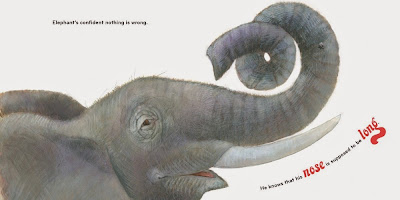 |
"Elephant is confident that nothing is wrong.
He knows that his nose is supposed to be long." |
Janet Stevens is one of my favorite illustrators of animals--I adore her
Help Me, Mr. Mutt! Here, her animals are full of personality and pizzazz. Kids will love the cartoony appeal, but also connect to how each proudly declares how they love themselves just the way they are.
Tommy Can't Stop
by Tim Federle
illustrated by Mark Fearing
Disney Hyperion, 2015
Your local library
Amazon
ages 4-8
Young Tommy is in perpetual motion, bouncing like a pogo-stick, hollering while he hurdles and clomping like an elephant. He's driving his family crazy ("'He's an
animal,' his sister pouts to their parents.") but you can tell from the illustrations that this is a little guy who's just got to move. When his mom drags him to tap class, he's really not sure it's for him. But when the teacher begins bouncing, he's hooked!
 |
"The tap teacher begins bouncing. (Wait! She twirls like... Tommy!)
'You're a ... pogo stick!' he whispers as he watches.
'I call this a hop'" |
I love the way this book shows Tommy discovering a joyful, positive way to channel his energy. When the tap teacher kicks, he's amazed that she kicks like a bulldozer -- but she says, "I call this a brush! (Everyone brushes, but Tommy brushes boldest.)" Kids--quiet ones and rambunctious ones--will feel this joy coming through both the illustrations and the words, as Tommy discovers how being true to himself helps him be a star.
Drum Dream Girl: How One Girl's Courage Changed Music
by Margarita Engle
illustrated by Rafael López
Houghton Mifflin Harcourt, 2015
Your local library
Amazon
ages 6-9
*best new book*
Cuba is an island full of wonderful music, but this beautiful picture book shows how hard one girl had to work to be true to her musical self. Millo Castro Zaldarriaga, who was of Chinese, African, and Cuban descent, dreamed of "pounding tall conga drums / tapping small bongó drums, and boom boom booming / with long loud sticks." But in 1930s Cuba, drumming was taboo for girls.
 |
“But everyone / on the island of music / in the city of drumbeats /
believed that only boys / should play drums …” |
Millo was not deterred, playing her drums every chance she can, even if it was in her own head. Finally, her father softened and brought a teacher to listen to Millo's drumming--a teacher who was so impressed that he allowed her father to have courage to break the social taboo. I just love how Millo's joy comes through in the illustrations. López captures a visual rhythm, the way that Engle does in her poetic text.
 |
“When she walked under / wind-wavy palm trees / in a flower-bright park / she heard the whir of parrot wings ...
the dancing tap / of her own footsteps / and the comforting pat / of her own heartbeat.” |
This beautiful, poetic picture book will inspire children today to follow their own dreams, even if society around them scorns them. To see more of these wonderful illustrations, head over to
Seven Impossible Things; to learn more about Engle and Lopez's creative process, definitely read Julie Danielson's article in Kirkus:
Beating the Drum for Women's Rights.
I hope you enjoy these new picture books. Whether it's humorous animals, bouncing little boys or girls who feel music thrumming in their souls, these stories can speak to kids, helping them have the courage to be themselves.
Illustrations ©2015 by Janet Stevens, Mark Fearing and Rafael López; used with permission from the publishers. The review copies were kindly sent by the publishers, Houghton Mifflin Harcourt and Disney Hyperion. If you make a purchase using the Amazon links on this site, a small portion goes to Great Kid Books. Thank you for your support.
©2015 Mary Ann Scheuer, Great Kid Books

What makes a great book for kids? I'd say it's a book that makes them want to read more, a book that makes them smile or wonder, a book that makes them think about it after they close the page. It's a book that inspires kids to create their own stories and feel the power of their own words.
Neon Aliens Ate My Homework is a collection of poems from comedian, musician and actor Nick Cannon that did just that.
Neon Aliens Ate My Homework and Other Poems
by Nick Cannon
illustrated by Nick Cannon, Art Mobb, and more
Scholastic, 2015
Your local library
Amazon
ages 6-9
*best new book*
Cannon shares a collection of poems that range from giggle-inducing to gross, thought-provoking to full of bravado, and this variety was very appealing to my students. They loved how one minute they were laughing about neon aliens eating up Nick's backpack to the next minute thinking about how they can believe in themselves and stand up to bullies who spread hatred.
Throughout, Cannon shows kids the power of words -- the words they read, and the words they write or say themselves. He starts by honoring Shel Silverstein, still a favorite among my students. This lets us talk about the power of books, both their staying power (their kids might read these same books!) but also the escape that they can provide during difficult times.
 |
"He changed my life with just his words.
The utmost respect is what he deserves.
He made me smile in my tough times,
He encouraged me to live life through my rhymes." |
We were able to dig into some of his imagery and characterization, whether Cannon used it to inspire us ("SuperMom" below) or entertain us ("Pink Lunch Lady"). His poems resonated with my students. They understand how a mom can be "soft yet tough" and could see how his examples helped show this.
 |
"She can multitask with lightning-fast hands,
And the brightest of lights shines wherever she stands.
She goes to work in the morning, conquers school at night.
She can read minds and knows how to break up a fight." |
Today, my students especially responded to the poem "Haters." We talked about Cannon's message and the power of his words. We talked about what the imagery meant, how hate can melt away. These are all skills that the Common Core is asking students to do -- but here, we are taking a modern poem that speaks to their experience to show how meaningful it can be.
 |
'Haters like to bully, but I will not waver.
Haters think they're tough, but I'm the one who's braver.
Haters are doubters, and I'm a believer.
Haters are cowards, and I'm an achiever.
One day when I'm older, living my dream,
I'll let that hate melt away, just like ice cream." |
Seek out this book and the audio recording. You can hear Nick Cannon reading his poems, which conveys how heartfelt so many of these poems are. My experience is that 2nd and 3rd graders respond best to this collection, hitting the same sweet spot as Shel Silverstein.
Illustrations ©2015 by Nick Cannon, Art Mobb, and Morf; used with permission from Scholastic. The review copy was kindly sent by the publisher, Scholastic. The audiobook review copy was borrowed from our local library as a downloadable audio through
Hoopla. If you make a purchase using the Amazon links on this site, a small portion goes to Great Kid Books. Thank you for your support.
©2015 Mary Ann Scheuer, Great Kid Books
Every spring, I love hearing birds chirping outside as we wake in the morning--a sure sign that daylight is coming earlier each day. As we enjoy our last week of National Poetry Month, I would like to share two new books that celebrate the beauty of birds in nature, prompting us to marvel at birds in nature.
Sweep Up the Sun
by Helen Frost
illustrated by Rick Lieder
Candlewick, 2015
Your local library
Amazon
ages 4-9
Poet Helen Frost reunites with photographer Rick Lieder to explore the wonders of the natural world. I adored their previous collaboration, Step Gently Out, and this new book is equally as delightful. Frost's poem encourages young readers to watch birds in flight playing in the sky, learning to fly and trusting the sky to hold them aloft. But she also encourages children to do the same:
"Spread your feathers,
sweep up the sun,
ride the wind and explore."
We can read this as a direct encouragement for children to take off and soar on their own. Lieder's amazing photography captures birds in mid-flight, freezing a moment in time. The final two pages provide brief information about each of the species photographed, ranging from house sparrows to Northern Cardinals.
The Sky Painter:
Louis Fuertes, Bird Artist
by Margarita Engle
illustrated by Aliona Bereghici
Two Lions, 2015
Your local library
Amazon
ages 6-9
Margarita Engle captivated me with her biography of Louis Fuertes, the artist who is known as the "father of modern bird art" because of the way he painted birds in flight in their natural environments. Fuertes loved watching birds as a young boy. As he began his career, he realized that revered artists such as James Audubon painted birds they had shot and killed, so that they could study their anatomy in detail.Fuertes decided that he wanted to let birds live, so he developed the skills to paint them, quickly capturing their flight and grace:
"painting quickly, while wings
swoop
and race
across
wild
blue
sky,
so swift,
and so alive!"
Pair these two books together and talk with children about the power of art and the call of nature. Why did these artists decide to focus on birds? What drew them to capture their flight? What do they want their audiences to think about? How do the poets words capture the birds' flight in a different way?
The review copies were kindly sent by the publishers, Candlewick Press and Two Lions. If you make a purchase using the Amazon links on this site, a small portion goes to Great Kid Books. Thank you for your support.
©2015 Mary Ann Scheuer, Great Kid Books
Our 3rd grade teachers are also focusing on persuasive writing this month, and they are asking kids to identify problems and suggest solutions. The challenge for kids is to explain how their solutions will work and persuade others that it's a good idea. We read
The Soda Bottle School as an example of how kids and teachers in one community identified an important problem and led the way with a creative solution -- and the kids loved it.
The Soda Bottle School
by Seño Laura Kutner and Suzanne Slade
illustrated by Aileen Darragh
Tillbury House, 2014
Your local library
Amazon
ages 7-10
The town of Granados has a problem: they don't have enough room in their school to teach all the kids. But they have another problem, too, that kids can relate to: there is too much trash all around their community. One day, teacher Seño Laura notices that a soda bottle is the same width as the beam of an unfinished school building. She has a crazy idea: what if they used empty soda bottles to create walls for a school? It could take care of two problems at once!
The whole community pulled together to support the teachers and children, gathering thousands of empty plastic bottles and stuffing them with trash to create “eco-ladrillos” (bricks). These bricks were stacked between the framing for the building, held in place by chicken wire fencing. A thin layer of concrete was slapped on top as a final layer.
Slade and Kutner draw young readers right into the story, helping them relate to the protagonist, young Fernando. My students especially liked the photographs and authors note included at the end of the story. I just found this news clip that would be another great way to share this story.
My students were interested and inspired to think of problems they would want to solve around our school. I especially liked this example because Kutner and Slade emphasize the importance of teamwork and thinking outside the box.
The review copy came from our school library collection. If you make a purchase using the Amazon links on this site, a small portion goes to Great Kid Books. Thank you for your support.
©2015 Mary Ann Scheuer, Great Kid Books

Students and teachers around the US are writing persuasive essays with renewed interest, as the Common Core explicitly calls on students to write opinion pieces that support a point of view with reasons and information. See, for example, the
ELA Writing Standard 5.1.
At the Emerson Library, we have been reading
Can We Save the Tiger?, by Martin Jenkins, to see how he develops his argument and supports it with reasons and information. Read
my full review of this terrific nonfiction picture book. Today, I want to take you into our concluding library lesson, where we examined Jenkins' text to see how we could learn from his writing.
We read the concluding two pages, projected on the screen. For each page, I asked students what key phrases they noticed that were particularly powerful. You'll see their responses in green below.
Students noticed that Jenkins began his conclusion with, "So you see, trying to save just one endangered species..." Their teacher drew this back to a phrase they had used in class: "As you can see..." Other students noticed the way he wrapped up his conclusion (see below) with a question to pull readers in: "And I think that would be a shame, don't you?"
.jpg)
We wanted a little more specifics about helping tigers, so we turned to online research. The
World Wildlife Fund has several very helpful pages about problems tigers are facing and action we need to take. This makes terrific model writing. Here's just one of the sections we looked at and the students' responses.
This paragraph is written in the same form that students are using in their writing. The claim or argument is "One of the biggest threats to tigers in poaching." WWF supports this with evidence and then elaborates their reasons. Students noticed the way facts were included within this paragraph, as well as explanations. They drew attention to the following phrases:
- "One of the biggest threats..."
- "Poaching has reached critical levels..."
- "Governments around the world must combat poaching..."
- "Nepal has already proved..."
We talked about how they can use similar language in their own writing, regardless of the topic.
School librarians play an essential role in helping students develop their persuasive writing skills. We help identify mentor texts, for students to read on high-interest topics. Much of my work in this area has been influenced by
Melissa Stewart's writing on mentor texts. I definitely recommend reading her wealth of posts about this topic.
School librarians also help students dig deeper into topics they care about, guiding them on authentic research. So much information is available on the Internet, but it is critical that we help students effectively find information they can read and understand. I used our library catalog's Destiny Web Path Express to target the WWF article.
This post is part of my larger body of work:
Common Core IRL: In Real Libraries. My thinking and work in this area is greatly helped by conversations with fellow bloggers and friends,
Alyson Beecher,
Cathy Potter and
Louise Capizzo.
See our full presentation from last summer here.
If you make a purchase using the Amazon links on this site, a small portion goes to Great Kid Books. Thank you for your support.
©2015 Mary Ann Scheuer, Great Kid Books
View Next 25 Posts



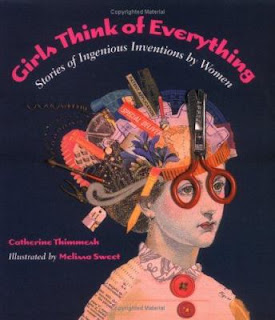




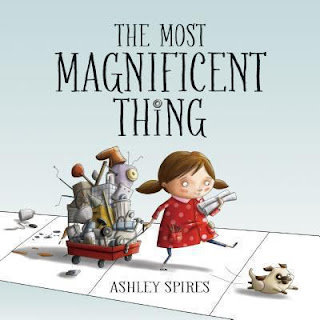

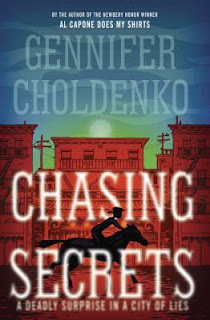
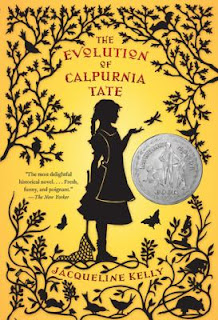
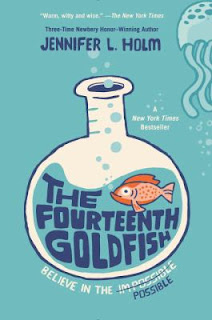
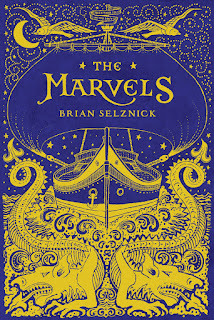
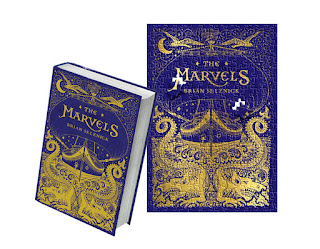







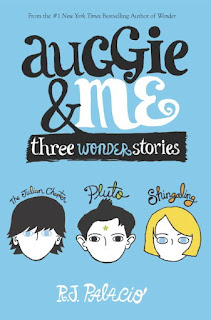



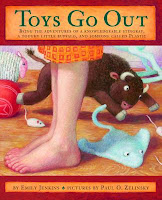

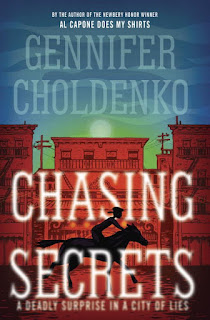
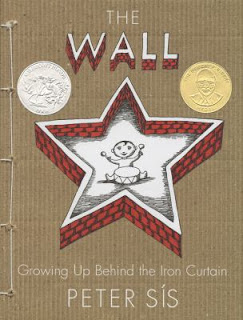










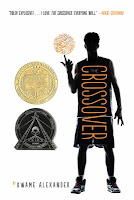






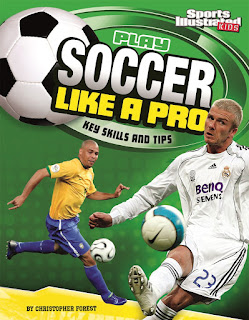






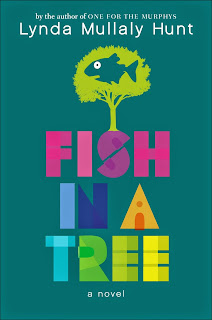






















.jpg)
.jpg)
